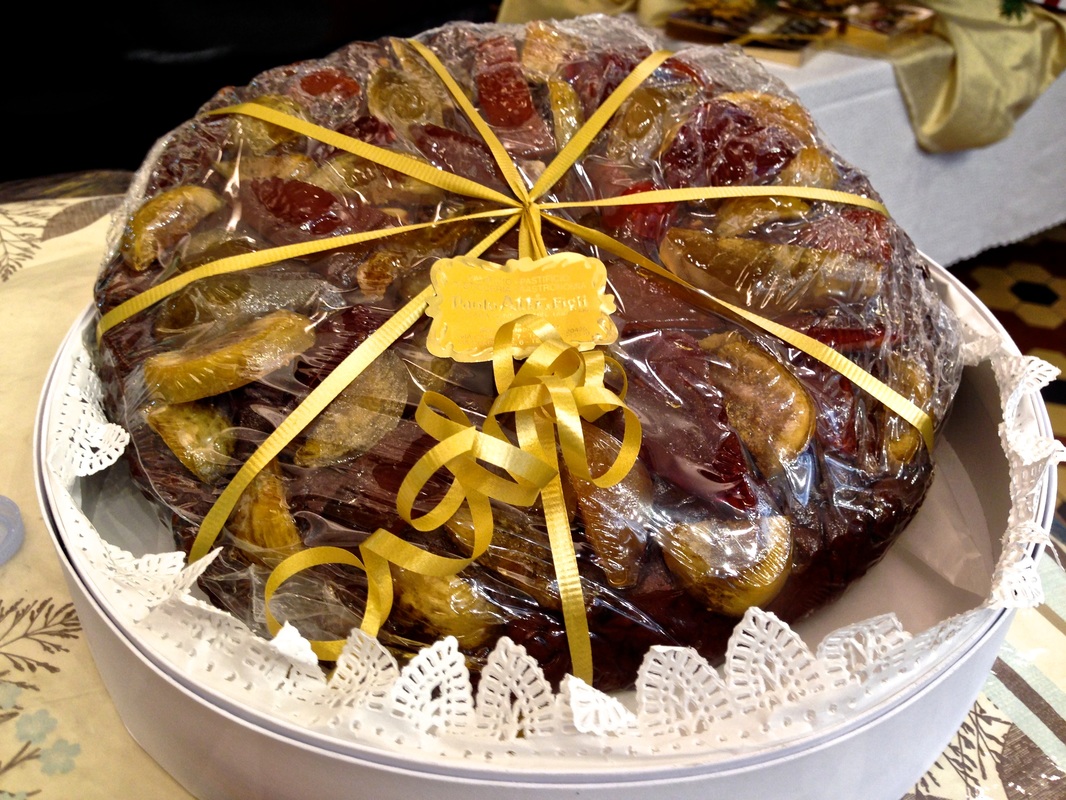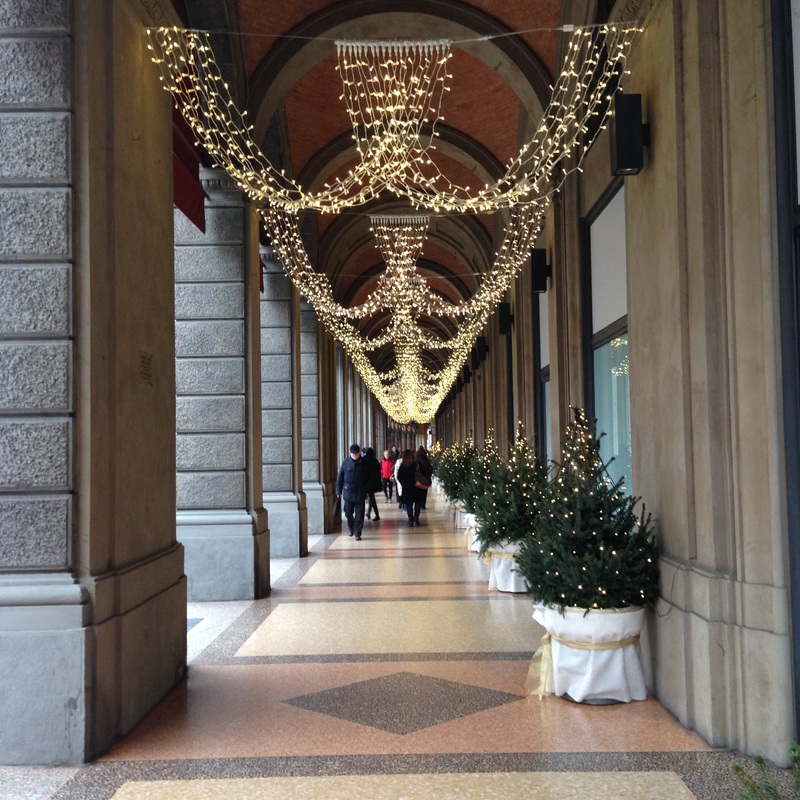|
Mortadella takes many forms at this famed specialty foods store. Bologna is a multifaceted city with all sorts of cultural attractions. It’s a UNESCO City of Music with a prestigious jazz festival and a frescoed, thoughtfully designed museum on the subject. The modern art museum boasts a formidable collections and the Cineteca has one of the most important collections of cinematic records in the country. Visitors can climb the famous Garisenda and Asinelli towers in the center or scale steps through 666 porticos to the Basilica Santuario della Madonna di San Luca for a panoramic view of the red rooftops. Yet, worthwhile as all of these things are, Bologna’s mighty gastronomic heritage tends to overshadow them. This is a city famously nicknamed “la grassa” (“the fat one”) and the birthplace of some of Italy’s most iconic pastas—where would we be without slow-simmered ragù draped over sunshine-yellow tagliatelle or sandwiched between whisper-thin sheets of spinach pasta with béchamel? So while you should go for Bologna for the art, the ambiance and everything else, you may still find yourself, as I recently did, planning your days in the city around meals. On my latest trip, one of the hotels I stayed at was Albergo delle Drapperie, a cozy boutique situated in the Quadrilatero, a network of ancient alleyways crammed with some of the best food shops and bars in the city. During the evening, the narrow streets fill with locals stopping for aperitivi or picking up a gourmet spread to take home. Paolo Atti & FigliFour generations of master bakers have worked at this legendary pasticceria, producing delicacies like saffron-hued panettone and certosino, a bolognese Christmas cake dense with glacéed fruits. They also carry a few unusual specialties, including a small tart filled with pasta. I wasn’t sure how I felt about a dessert tagliatelle, but one bite of the buttery, crumbling pastry shell and the crisp noodles changed my mind. On my visit, I was lucky enough to get a behind-the-scenes look at the kitchen, where the staff were hard at work preparing seasonal sweets and some of the tiniest tortellini I’ve ever seen. La Baita Formaggi More than just cheese at La Baita Formaggi. When you stop by this unusual cheese shop, be sure to pick up a slab of black mountain cheese. It’s actually a unique variety of Parmigiano-Reggiano—though it cannot legally be called such due to the strict regulations—covered in a fine layer of vegetable ash that is only sold by this store. All sorts of other cured meats and cheeses are available; in the evenings, the table outside are an excellent spot for people-watching and nibbling. Salumeria Simoni and Focacceria Laboratorio Simoni These two neighboring stores on Via Drapperie and Via Pescherie Vecchie are run by the same family. The father, Nino, still runs the former, and his son Davide is in charge of the latter, a relatively recent addition to the street. Both offer an excellent selection of artisanal, quality cured meats, many from their own family label. If you stop by Focacceria Laboratorio Simoni, be sure to stay for a glass of something and try their clever reinvention of the tortelloni: a pasta-shaped bread stuffed with silky mortadella. A.F. TamburiniLike kids in a candy store. A second-generation purveyor of the finest of foods, this well-curated emporium has everything you want. Bottles of Krug Champagne, huge wheels of cheese, and legs of prosciutto line the shelves. The tortellini and other prepared foods are exceptional, even in this city of sky-high culinary standards. Colossal wheels of the good stuff at Tamburini. Osteria del Sole Not so much a bar as an institution, Osteria del Sole might be one of the best places to grab a drink anywhere in the city. The no-frills venue has been serving dirt cheap wine to high and low society since 1465. Dinner is on a BYO basis, meaning you can load up an impromptu picnic basket at any of the neighboring shops and have a feast. Later in the evening, the osteria gets so packed that the crowds spill into the street. Mercato di MezzoReopened in 2014 as an upscale food hall, Mercato di Mezzo is one of the trendier places in town at the moment. Offerings range from craft beer and bubbles to smoothies and traditional aperitivi snacks. An Eataly pizzeria is located on the top floor, meaning fans of the Slow Food behemoth can get their fix until the massive food emporium arrives in the next couple months. As food halls go though, my current favorite is still one of the most traditional. Situated on Ugo Bassi, Mercato delle Erbe serves as a produce, fish, meat and bread market during the day and offers drinks during the evening. All I wanted for Christmas...
2 Comments
Rome is the most romantic city I know. Sardenia is vast and hauntingly beautiful. Puglia is magic. Yet, as someone who has traveled through and been charmed by much of Italy, the place I always want to go back to is Bologna. It’s less glamorous than Milan and less photogenic than Venice, but Europe’s oldest university town boasts a culture that is ancient and young, posh and gritty, dignified and funky. Unlike many Italian culture-capitals, which appear frozen in the past and choked with tourists in high season, Bologna’s historic streets and rust-colored porticoes feel very much alive. On weekends, traffic shuts down and pedestrians invade the major roads. This is a city as famous for its progressive ideals and acceptance of diversity—it hosts one of the continent’s largest transgender film festivals—as it is for its tortellini, lasagne and ragù. It’s also arguably one of the best cities in which to be a student. I would know, because I spent one glorious semester abroad there. Officially, I studied art history. In reality, I spent most of my days riding on the backs of busted bicycles, eating everything, and practicing my broken Italian to anyone who would listen. Nostalgia can be a dangerous thing and each time I return to Bologna, I worry that it won’t quite live up to my glowing memories. On a recent research trip, I was happy to find that it actually surpassed them, that the city has retained its alternative edge while adding slick new attractions like the Museum of the History of Bologna. Thankfully, one thing hasn’t changed: the gelato is still some of the best anywhere. Although Berlin’s Eis is terrific, I’d gladly book a flight just to visit some of the following. Il GelatauroBefore the world careened towards pumpkin-spice saturation, this beautiful shop was selling pastel-hued Zucca e Cannelle. Unlike a syrupy latte, this barely sweet scoop tastes like an especially smooth, rich bite of pumpkin pie. It was and still is perfect in every way. Other unconventional flavors, including goat’s milk with blueberries and Il Regno delle Due Sicilie, with almonds and pistachios (for those of us who can’t make up our minds), are equally lovely. This was my favorite place as a student. There's more than gelato to Il Gelatauro. Cremeria FuniviaThere are so many reasons to love this spot near Bologna’s ritziest shopping district. Not only do they do a brilliant, boozy hot cocoa, but they’ll also coat the inside of your cone with melted chocolate. Also, I cannot imagine a social occasion that wouldn’t be improved by one of their gelato cakes. Their selection errs on the traditional side, but they throw in a few creative extras like New York New York, with maple syrup and pecans, and Contessa, with an almond base sprinkled with amaretti cookies and almonds brittle. La Sorbetteria Castiglione Twenty-one years old and still going strong. A classic for more than two decades, La Sorbetteria sets itself apart by offering “healthier” options made with fructose and natural ingredients. Many of their flavors are egg- and gluten-free. While I’m always skeptical of such claims when it comes to desserts, the gelato here is quite tasty. They offer all the usual flavors, but really shine with specialties like Dolce Emma, with ricotta and caramelized figs, or Cremino Guglielmo, with espresso, mascarpone and cacao nibs. Nearby Piazza Santo Stefano is one of the most atmospheric in the city. Cremeria Santo Stefano The New York Times recently pronounced this the best in Bologna. It’s a tall claim, but one that’s difficult to dispute. Opened in 2013, the shop’s new location is just off of one of my favorite piazzas in the city and crammed with all kinds of confections. I tried my usual (pistachio) and one of their seasonal flavors (speculoos!) and both were flawless. All sorts of other delicious things at Cremeria Santo Stefano. Cremeria Scirocco Sadly, this place is located outside the historic center of Bologna and I didn’t have a chance to visit on my last trip. Years ago, I took a class with the owner here, a self-professed gelato geek who has production down to an exact science. Flavors range from conventional to wildly eccentric—think Parmigiano-Reggiano with figs, gorgonzola with nuts, curry, or even ricotta with mortadella. Honorable MentionsGelateria Gianni may not be as fancy as some of the competition, but it sure is pretty. The aforementioned may be my favorites, but there are dozens of other worthy gelaterias in town. Grom may be a chain, but the quality is still excellent and you won’t have to shell out US$5.25 for a small scoop like in New York. Il Gelato di San Crispino is a delicious import from Rome. The original near the Trevi Fountain is terrific, but I’ve left it off this list as it’s not native to Bologna. Finally, Gelateria Gianni under the city’s iconic towers remains a popular student hangout. The ice cream here is candy-colored and on the commercial side, but still pretty great..
|
































 RSS Feed
RSS Feed